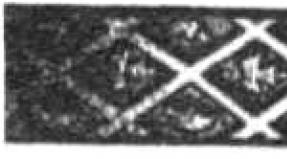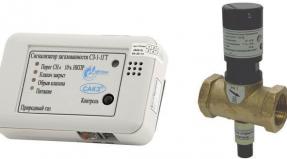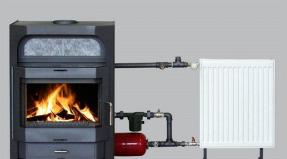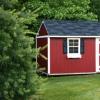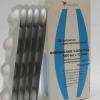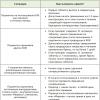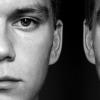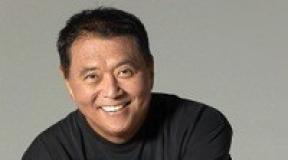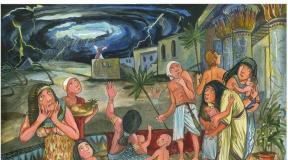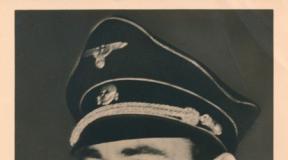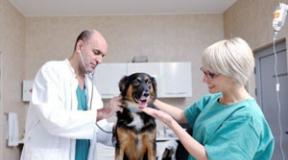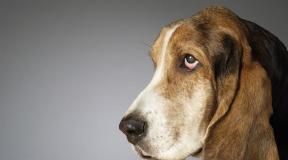Examination of a child by a speech therapist in kindergarten. Logopedic examination. Sound condition
Speech therapy examination at an early age is necessary to determine the level of speech development of the child. A comprehensive diagnosis of a speech therapist helps to notice pathologies in time that affect the speech center. Such a measure is needed both to identify the cause of violations and to select the best methods for solving the problem.
The first visit to a speech therapist is recommended at the age of 3-4 years, when the child is about to start kindergarten. In some cases, a visit to the doctor is made earlier, when parents notice persistent speech disorders. It may also be necessary to diagnose a speech therapist at school when the problem is just beginning to be detected in the learning process.
At the first appointment, the doctor will offer to fill out a questionnaire, which indicates the important points in the development of the child. The information obtained will help the speech therapist to plan the work correctly and select an individual program.
During a general examination, the doctor finds out the following points:
- level of knowledge of geometric shapes, colors, parameters of objects;
- the ability to navigate in space and time;
- knowledge of simple mathematical concepts;
- state of fine motor skills;
- ability to classify.
The examination of speech development includes an assessment of the child's understanding when they are addressed to him, finding out what speech means he uses, whether he imitates adults, how he answers questions. The doctor asks to name and show the object, part of the body, animal, describe something in one word.
When examining coherent speech, the doctor asks the child's name, the names of parents, sisters, brothers, with whom he lives, what is his favorite toy. Then he will need to tell a story, make sentences using pictures and key words.
When should you show your child to a speech pathologist?
The earliest reason to visit a speech therapist will be the absence of cooing in infants up to a year old. The strategy of waiting until the child "talks" will be wrong, because the older he gets, the more difficult it is to solve the existing problem.
The following violations will also be a reason to contact a specialist:
- by the age of three, the child cannot correctly build phrases;
- does not master the grammatical structure until the age of five;
- the child began to speak, but then became completely silent;
- Poorly pronounces certain sounds.
In addition, the diagnosis of readiness for school by a speech therapist will help parents to engage in the proper development of the baby. The specialist will tell you what to focus on, how to conduct classes, how to interest the child in improving speech.
Stages of examination by a speech therapist

Examination of children by a speech therapist consists of several stages:
- Supervision of the child during the game, communication with parents.
- Evaluation of the manifestation of interest in the surrounding people and objects.
- Attention, the ability to concentrate, as a child perceives loud sounds and whispers.
- Evaluation of observation - matching pictures, objects, recognizing colors.
- The study of the level of intellectual development - the ability to count, distinguish objects by basic features, navigate in space.
- States of speech and general motor skills.
- The ability to understand speech and pronounce - repetition of sentences, understanding the story, performing light assignments, making sentences.
In some cases, several visits to a specialist are required so that he can verify the presence of violations or confirm their absence.
They will be carried out according to the scheme drawn up after the initial survey and forecast.
Preparing your child for a visit to the doctor
A visit to a specialist can alarm the child, then he will close and will not make contact, which is extremely important for diagnosis. Some children may react negatively to a visit to a speech therapist, even with a correct explanation of the purpose of the visit, arguing that they have no problems and they already know how to “beautifully” talk, and then it is very difficult to convince them.
- tell the child who a speech therapist is, explaining to him as an adult;
- show a video where a speech therapist works with a child;
- very small to say that you are going to get acquainted and play.
The speech therapist starts the first appointment in the form of a game, because the child feels comfortable. If you hide from him the purpose of the visit to a specialist, he will be excited, and then it will be more difficult to get in touch with him.
Types and methods of diagnostics of a speech therapist

Methods for diagnosing children under 2 years of age without intellectual and hearing impairment:
- Understanding the names of objects Several toys are laid out in front of the child, the speech therapist asks to show each of them in turn.
- Understanding actions. The speech therapist asks to perform a certain task - feed the doll, put the bear to sleep.
- Group orientation. The child is asked to point to an object located in the room, to find something or to approach something.
- active speech. The child plays freely, during which the speech therapist observes his emotions, pronounced sounds, words.
Methods for diagnosing a child by a speech therapist under the age of 3 years:
- Understanding of speech, prepositions. The task is given - to put the toy “under”, “near”, to step over “through”, to stand “in front of” something.
- Understanding prefix relationships. An order is given to “close”, “deploy”, “open”, “take away”.
- auditory attention. The ability to distinguish words similar in sound - "moustache-ears", "mouse-bear" is determined.
- active speech. The speech therapist conducts a free conversation with the child, expecting to hear a complex subordinate clause.
What might be the results
The results of a speech therapy examination contain information about the pace, rhythm, intonation of the voice, and breathing patterns. The speech therapist makes notes about the state of the sound-voice structure of phrases and individual words, impressive and expressive speech, vocabulary, and voice motor skills.
A speech pathologist can identify speech disorders such as:
- tongue-tied tongue or dysalgia - distortion, replacement of sounds, their mixing or absence;
- rhinolalia - a violation of sound pronunciation and timbre of the voice due to defects in the speech apparatus, the child is nasal, distorts sounds, speaks monotonously;
- dysarthria - there is a consequence of damage to the central nervous system, when the movements and strength of the organs of speech are disturbed, it is difficult for the child to control the language;
- alalia - partial or complete absence of speech while maintaining normal hearing, the child tries to contact parents and other people, doing this with facial expressions and gestures;
- delayed speech development - occurs with violations of the physical and mental state, often observed in children from dysfunctional families;
- logoneurosis is stuttering, when a child stretches out sounds, repeats consonants, stops in mid-sentence, the exact reasons have not yet been clarified, but the psycho-emotional state plays a big role;
- dyslexia and dysphagia - the inability to master reading and writing with normal intellectual development, the child sees other letters, he makes many mistakes in writing.
If a defect is found, it is necessary to determine the root cause so that work with a speech therapist is aimed at eliminating it. When there is a suspicion of damage to the nervous system, the doctor sends for examination to other specialists - a neurologist, psychologist, defectologist. The final conclusion is made by a speech therapist after receiving answers to all the questions posed.
Natalya Khruleva
Speech therapy examination of children with speech disorders under the conditions of the introduction of the Federal State Educational Standard
Khruleva N. V., teacher - speech therapist MOU PPMS CDC"Chance", year 2014
« Speech therapy examination of children with speech disorders under the conditions of the introduction of the Federal State Educational Standard».
Federal State Educational Standard for Preschool Education (GEF DO) takes into account educational needs and features children with disabilities (HIA)- to the program "Birth to School" included section "Correctional and inclusive pedagogy".
Created taking into account the peculiarities of speech and general development children with disabilities, The standard provides learning through activities, opens up wide opportunities for pedagogical creativity, providing the opportunity to create variable educational materials that provide step-by-step logopedic correction, ability development children independently solve educational-cognitive and educational-practical tasks in accordance with their capabilities.
Program implementation "Birth to School" in accordance with GEF involves an assessment of individual development children within the framework of pedagogical diagnostics.
At the core speech therapy examination lie the general principles and methods of pedagogical diagnostics: it must be complex, holistic and dynamic, but at the same time it must have its own specific content, aimed at analyzing speech violations.
Complexity, integrity and dynamism surveys are provided by that all sides are examined speech and all its components, moreover, against the background of the whole personality examined, taking into account the data of its development - both general and speech.
So what is speech therapy examination?
Logopedic examination is a set of measures aimed at identifying speech disorders in the subject through a comprehensive and complete study speeches, its individual components, taking into account the data of personality development from an early age.
the main goal speech therapy examination consists of the following:
Explore terms upbringing and development of the child on the basis of a conversation with parents and analysis of documents;
To identify the level of development of leading activities and evaluate in accordance with age standards;
To reveal the characteristic features of the emotional-personal and cognitive sphere of the general mental development of the child;
Assess the state of the connected speeches from the point of view of its subject-semantic and lexical-syntactic design;
Determine the degree of mastery of the components of the language system.
At the core speech therapy examination lies"speech card".
Logopedic examination according to the speech map, includes the following points:
1. First name, last name, age.
2. Data of early development:
a) general (briefly);
b) speech (detailed, by periods).
4. Vision.
5. Intelligence.
6. The structure of the organs of articulation, their mobility.
7. The state of general motor skills.
8. Brief description of the child at the present time.
9. Speech: a) impressive; b) expressive - from the point of view of phonetics, vocabulary, grammatical structure; whether he owns a broken speech.
10. Conclusion.
The first paragraphs are filled in from the words of the mother accompanying the child, and on the basis of medical records.
This data collection takes quite a lot of time.
We have optimized this process and use questionnaires to collect anamnestic data.
The questionnaire does not exclude conversations with parents, but significantly reduces its time.
Data from the questionnaire speech therapist transfers to the speech card, and puts the questionnaire itself into the individual folder of the child. We have created such folders for each child and collect all the material on survey(drawings, cards with completed tasks, etc. + we also put in a speech card).
Data on the structure of the organs of articulation are obtained on the basis of an examination of the oral cavity. We cannot get away from this. We establish the mobility of the articulatory apparatus by inviting the child to make the main movements of each of the organs (lips, tongue, soft palate, while freedom and speed of movement are noted, its smoothness and uniformity of movement of the right and left sides (tongue, lips, soft palate, as well as ease of transition from one movement to another.
The survey begins with a conversation. We use the topic for conversation and benefits, according to the speech map.
Another methodical approach surveys there will be active observation of the child in the course of his activities, which we organize, offering him various material (toys, pictures) and putting before him various tasks of the game and curriculum.
In the classroom for musical, physical development, while eating, we reveal the state of general and fine motor skills, and enter the data into the speech map.
In the process of specially organized activities, we observe how children perform educational and play tasks aimed at studying the overall development of the child.
H - r: The task "The Fourth Extra" on individual sheets. The children had to circle the object that they thought was superfluous, and color the rest of the objects, united by a common feature, with colored pencils. While observing the children, we note who finds it difficult to complete the task correctly, and ask this child to explain his choice.
This and other types of tasks for surveys we take from"Album of individual examinations of a preschooler» - author Tatyana Aleksandrovna Tkachenko, series "Practical speech therapy» . We put the cards with the completed task in the individual folder of the child.
We use these tasks to identify the level of children's knowledge of general concepts.
Board games are also used, such as loto. "Who needs what to work?", or pictures from question: "Who's missing something?" The teacher can play the game. Speech therapist at this time watching the action children, listens to their responses and captures the data in the speech map. We use this technique to identify the volume of vocabulary.
Complete understanding speeches- a necessary prerequisite for the correct use of speech and for further successful learning. Therefore, starting examination of the child, speech therapist explores all aspects speeches: its impressive and expressive side.
Examining impressive side speeches(understanding speeches, we focus on how understands child:
a) the names of various everyday items;
b) generalizing words (clothing, dishes, furniture, vegetables, transport, etc.);
c) everyday phrases;
d) a short text told or read to him.
At survey expressive side we study speeches:
a) a dictionary;
b) grammatical structure speeches;
c) sound pronunciation;
d) phonemic hearing;
e) syllable structure of the word;
Analyzing answers children, we determine the poverty or wealth of the dictionary (names of objects and their actions, qualities, position in space (to identify the use pretexts) etc.
At survey of the grammatical system, the nature of the design of the answers, the use of the phrase (short, elementary, stereotypical or expanded, free, is revealed, special attention is paid to the correct agreement in the verb and case endings, the correctness of the use pretexts.
For surveys sound pronunciation, we select subject pictures so that their names include the tested sounds at the beginning, middle and end of words.
For surveys we select the necessary illustrative material,
conveniently differentiated by sections and topics:
"Album on development speeches» - author Victoria Semyonovna Volodina;
« Speech therapy cards for examining sound pronunciation, syllabic composition of words, lexico-grammatical structure and coherent speeches"- author Natalya Nikolaevna Belavina.
"Album of individual examinations of a preschooler» - author Tatyana Alexandrovna Tkachenko.
Innovations that are changing education in our country involve the vigorous activity of all participants in the educational process, encourage them to analyze their work and make the necessary adjustments to it. We have optimized the process speech therapy examination:
introduced the questionnaire into the process of conversation with parents;
for surveys the general development of the child, we use the method of active observation in the process of specially organized activities and during classes;
a folder was created for each child, where we collect all the material on survey(drawings, cards with completed tasks, a questionnaire for parents, a speech card).
As a result survey becomes comprehensive, complex and dynamic and makes it possible not only to analyze speech disorders but also to outline a plan for the most effective assistance.
This material will be useful primarily for novice teachers - speech therapists, young professionals.
The material contains schemes for examining a child of early and younger preschool age, middle and older preschool age, primary school age with mental retardation.
The schemes consist of several sections, including: the study of non-speech mental functions, the study of the phonetic side of speech, the study of the phonemic side of speech, the study of the vocabulary and grammatical structure of impressive speech, the study of the vocabulary and grammatical structure of expressive speech, the state of coherent speech, the study of speech understanding, etc. .d.
Download:
Preview:
The scheme of examination of the child of early and younger
preschool age (from 2 to 4 years)
I. Study of nonverbal mental functions
1. General data obtained from observation of the child during the examination:
A) sociability (easily enters into contact, initiative or passive in communication, communication is unstable, there is selective communication, selective negativism);
B) features of attention (stable, unstable);
C) the nature of gaming activity (manipulation with objects, games with imaginary objects, constructive games, story games, role-playing games);
d) individual characteristics.
2. State of auditory attention:
a) differentiation of sounding toys;
b) determining the direction of the sound source (sounding toy).
3.Study of visual perception:
a) perception of magnitude (does not correlate, correlates, denotes by a word): large - small;
b) color perception (does not correlate, correlates, designates with a word):
2-3 years - red, blue, yellow, green;
3-4 years - red, blue, yellow, green, black, white;
c) perception of form (from 3 years old):
distinction between basic geometric shapes (pick up a picture according to the model: circle, triangle, square).
4. The study of visual-spatial gnosis and praxis:
a) orientation in space (top - bottom, front - back);
b) folding cut pictures (from 2-3 parts);
c) folding figures from sticks according to the pattern (2-4 sticks).
5. The state of general motor skills(normal motor skills; motor disorders - motor tension, stiffness of movements, uncoordinated movements, awkwardness, etc.).
For children from 2 to 3 years old:
- walk along the path chalked on the floor;
- step over an obstacle 25-30 cm high;
- slowly spin in place;
- throw the ball with both hands from the chest, from behind the head;
- catch a thrown ball;
- jump on two legs in place;
- perform forward and side bends.
For children from 3 to 4 years old:
- run 3-4 times between the two lines drawn
on the floor at a distance of 20-25 cm from each other; - switch from running to walking, stop on a signal;
- walk along the cord laid on the floor;
- long jump from a place;
- shift an object (flag, ball) from one hand and the other (above your head, behind your back, in front of you).
6. The state of manual motor skills(normal motor skills, motor disorders).
At 2-3 years old:
- "feed" the doll;
- to mold a stick, a ball, a steering wheel from plasticine;
- know how to use a spoon.
At 3-4 years:
- unbutton, fasten buttons, be able to hold a pencil;
- draw horizontal and vertical lines;
- draw a circle, a human body;
- put together a large mosaic.
II. Study of the phonetic side of speech (determination of symptoms and mechanisms of disorders)
Playing onomatopoeia
Repeat after the speech therapist:
The doll is crying: ah-ah-ah. The mouse squeaks: and-and-and.
Baby crying: wow. The dog barks: av.
The train is humming: woo. Lost in the forest: ay.
The donkey shouts: ia. The cat meows: meow.
Study of the sound-syllabic structure of words(from 3 years old) Repeat after a speech therapist (reflected) words of 1, 2, 3 syllables (mark the maximum number of syllables of correctly reproduced words).
State of sound pronunciation
Vowels [th]
Consonants: whistling
[b], [n], [m] hissing
[v], [f] affricates
[D], [t], [n] [l], [l "]
[g], [k], [x] [p], [p "]
b) teeth (sparse, crooked, small, outside the jaw arch, missing teeth, etc.);
c) jaws;
d) bite (prognathia, progenia, open lateral, open anterior, cross);
e) hard palate (high narrow, flat, shortened, cleft, submucosal cleft);
g) tongue (massive, small, "geographic", with a shortened hyoid ligament).
The state of speech motor skills
1. State of mimic muscles(by imitation):
- raise eyebrows up ("surprised");
- frown ("get angry");
- squint your eyes;
- puff out cheeks ("fatty");
- draw in the cheeks ("thin");
2. State of articulatory motility(performing movements by imitation):
a) lips - “smile” - “tube”;
b) tongue - wide, narrow, up, down, "pendulum";
c) soft palate - open your mouth wide and yawn.
Mark the following movement parameters:
b) tone (normal tension, lethargy, excessive tension);
c) range of motion (full, incomplete);
d) the ability to switch from one movement to another;
e) replacement of movements;
f) additional and superfluous movements (synkinesis);
g) the presence of tremor, hypersalivation, deviations of the tip of the tongue.
- Type of non-speech and speech breathing(clavicular, thoracic, diaphragmatic, etc.). The volume of speech breathing (normal, insufficient). The frequency of speech breathing (normal, rapid, slow). The duration of speech breathing (normal, shortened).
Features of the prosodic side of speech (in the presence of phrasal speech):
a) pace (normal, fast, slow);
b) rhythm (normal, arrhythmia);
c) pause (correct, broken - division of words by a pause into syllables, division of syllables into sounds);
d) the use of the main types of intonation (narrative, interrogative, incentive).
III. Study of the phonemic side of speech (from 3 years old)
1. Show in the pictures the objects called by the speech therapist:
table - chair, braids - goats;
dad - woman, slide - crust;
dot - daughter, bowl - bear.
2. Show the dog when it growls: rrrr (from a number of sounds).
IV. The study of vocabulary and grammatical structure of impressive speech
1.Passive dictionary:
a) understanding of specific nouns (denoting specific concepts, objects): show objects, parts of objects, parts of the body, etc. according to the verbal instructions of the speech therapist;
b) understanding of generalizing words (from 3 years old): choose objects or pictures on the topics “Toys”, “Dishes”, “Clothes”;
c) understanding of actions:
- show where the girl sleeps, plays, draws, eats, etc. (in the pictures);
- perform instructions according to the speech instruction (“Give the doll”, “Feed the doll”, “Plant the doll”, etc.).
2. Understanding singular and plural forms of nouns(show in the pictures: cup - cups, mushroom - mushrooms, doll - dolls, ball - balls).
- Understanding prepositional case constructions with prepositions on, in, under, for (from 3 years old) (“Put the ball in the box, on the table, under the table”, etc.).
- Understanding the diminutive suffixes of nouns (show in the pictures: house - house, spoon - spoon, ball - ball, doll - doll).
V. Study of vocabulary and grammatical structure of expressive speech
- General characteristics of speech(there is speech or is absent, babble speech, speech in separate words, phrasal speech).
- Active Dictionary:
a) nouns (name objects, pictures on the topics: “Toys”, “Dishes”, “Clothes”, “Shoes”, “Family”, “Animals”, etc.);
b) verbal dictionary (name what the boy is doing, from the pictures: eats, sleeps, plays, draws, drinks, walks, etc.);
c) adjectives (from 3 years old) (name the color, size, taste and other qualities of objects from the pictures).
3. The state of the grammatical structure of speech(examined in the presence of phrasal speech):
a) the use of nouns in the nominative case of the singular and plural:
table - tables hand - hands
ball - balls ball - balls
doll - doll eyes - eyes
b) the use of nouns in the accusative case of the singular without a preposition (“Name what you see in the pictures.” - “I see a ball, a doll, a house, a dog”, etc.);
c) the use of nouns in the genitive case of the singular without a preposition (call from the pictures):
Whose tail is this? - Foxes. Who's bag is this? - Moms.
Who's machine is this? - A boy. Whose ears are these? - Hare;
d) coordination of adjectives with singular masculine and feminine nouns (from 3 years old) (name the color of objects: the ball is red, the pencil is blue, the car is red, the cup is blue);
e) the use of prepositional case constructions (from 3 years old) with prepositions on, in, under, for (name the location of objects in pictures or by demonstrating actions with objects);
E) the use of nouns with diminutive suffixes: how to name a small object? (by pictures):
table - table spoon - ...
nose - ... doll - ...
house - ... bed - ...
VI. The state of coherent speech (examined in the presence of phrasal speech)
Logopedic conclusion
Scheme of examination of a child with mental retardation (from 4 to 7 years)
Well-known sections, such as the passport data of the child, information about early physical, mental and speech development are omitted.
I. Study of non-verbal mental functions
1. Auditory Attention:
a) differentiation of sounding toys (“Show me which toy sounded: tambourine, rattle, pipe, harmonica?”)
b) determining the direction of the sound source (sounding toy)
2. Perception and reproduction of rhythm:
4 to 5 years (of 4 elements): - -.., -..-, ..- -, -..., ...-
from 5 to 7 years (from 5 elements): --..-, -..--, --..., ...--
3.Visual perception:
a) selection of pictures for a given color background:
4-5 years old: white, black, red, yellow, green, blue,
from 5 to 7 years: except for the main colors, pink, blue, lilac, orange, brown,
b) showing primary colors.
4. Visual-spatial gnosis and praxis:
a) 4-7 years old - show the right and left arm, right and left leg,
5-7 years - show the right and left eye, right and left ear,
6-7 years old - with the right hand show the left eye, with the left hand - the right ear,
b) show objects that are on the right, left, top, bottom, front, back,
c) folding cut pictures from 2-4 parts (from 4 to 5 years), from 5-8 parts (from 5 to 7 years),
d) folding figures from sticks
5. The state of general motor skills:
strength of movement,
motion accuracy,
pace of movement,
movement coordination,
6. Hand motor status:
motion accuracy,
The pace of movement.
Synchronization of movements of the right and left hands,
Switching from one movement to another.
Tasks.
From 4 to 5 years: “the fingers of the right and left hands greet”, “the fingers of only the right, only the left hand greet”, mosaic, lacing, buttoning, coloring, cutting.
From 5 to 7 years in addition: - "playing the piano" (fingers 1-5, 2-4, 5-1, 4-2, 1-2-3-4-5, 5-4-3-2-1 );
Fist - palm - rib (right, then left hand);
Alternation of movements: right hand - palm, left hand - fist, then vice versa.
II. Phonetic side of speech
State of sound pronunciation
The nature of the pronunciation of sounds in isolation, in words, in phrases.
Anatomical structure of the articulatory apparatus
Note the presence and nature of anomalies in the structure:
a) lips (thick, thin, cleft, scars);
b) teeth (sparse, crooked, small, outside the jaw arch, missing teeth, double row of teeth);
c) jaws;
d) bite (prognathia, progenia, open lateral, open anterior, crossbite);
e) hard palate (high narrow, gothic, flat, shortened, cleft, submucosal cleft);
e) soft palate (shortened, forked, lack of a small tongue);
g) tongue (massive, "geographical", small, with a shortened hyoid ligament).
Speech motor skills
1. State of mimic muscles.
Tasks:
Raise your eyebrows up ("surprised");
Furrow your eyebrows ("get angry");
Squint your eyes;
Puff out cheeks ("fatty");
Draw in the cheeks ("thin").
(Note the presence or absence of flattening of the nasolabial folds.)
2. State of articulatory motility.
Tasks:
Lips "Smile" - "Tube" under the account: up to three (up to 5 years); up to five (from 5 years old)
a) the presence or absence of movement;
b) tone (normal, sluggish, overly tense);
c) the pace of movements (normal, fast, slow);
e) range of motion (full, incomplete);
e) accuracy of execution;
g) duration (the ability to keep the lips in a given position)
h) movement replacement;
i) additional and small movements (synkinesia);
Language :
Wide - narrow (under the count: 3 times - up to 5 years old), (5 times - from 5 years old),
Raise the tip of the tongue, lower it,
-"Pendulum",
- "Swing" (wide tongue on the upper lip - on the lower lip),
- "Click".
a) the presence or absence of movement;
b) tone;
c) pace;
d) switching from one movement to another;
e) traffic volume;
e) accuracy of execution;
g) movement replacement;
h) the duration of holding a given position;
i) additional and extra movements (synkinesis);
j) the presence of tremor, salivation, deviations of the tip of the tongue.
Soft sky
Task: pronounce the sound [a] with the mouth wide open.
(Note the same movement parameters.)
1. Type, volume, smoothness of non-speech and speech breathing, duration of speech exhalation;
a) loudness (normal, quiet, excessively loud);
b) the presence or absence of a nasal shade;
Features of the dynamic side of speech
1.Temp (normal, fast, slow);
2.Rhythm;
3. Correct use of pauses;
4. The use of the main types of intonation (narrative, interrogative, incentive).
Reproduction of the sound-syllabic structure of the word
1. Isolated words:
from 4 to 5 years:
house bridge cat
snow porridge cabbage
roof bread tomatoes
from 5 years old:
tomato policeman
draft aquarium
pan medicine
curdled milk temperature
snowdrop whistle
birdhouse
2. Offers (from 5 years old):
The boys made a snowman.
The plumber is fixing the plumbing.
Hair is cut at the barbershop.
The policeman rides a motorcycle.
The traffic controller is at the crossroads.
III. The state of phonemic perception (auditory differentiation of speech sounds)
1. Repetition of syllables with oppositional sounds:
from 4 years old:
pa-ba pa-ha
ba-na ta-na
wa-ta ha-da
ta-da ka-ha
me-ma ba-ma
from 6 years old:
ba-ba-pa sa-sha-sa
ta-da-ta zha-za-zha
ha-ka-ha cha-sha-cha
ba-ba-ba for-sa-for
2
.
Differentiation of oppositional sounds that are not intermingled
in pronunciation.
Show pictures:
bear - mouse barrel- kidney
duck - fishing rod grass- firewood
3. Hearing differentiation of sounds mixed in pronunciation:
bowl - bear flower - Svetik
rat - roof evening - wind
river - radish spit - goats
bang- lye
IV .The state of phonemic analysis and synthesis
From 4 years old:
1. Selection of a given sound [m] or [p] from words. On assignment, find out if the sound [m] (calf lowing) or the sound [r] (motor) is heard in the words:mouse, mosquito, board, window, frame, house, fish, firewood, table, ball.
From 5 years old:
2. Highlighting a stressed vowel at the beginning of a word (“Tell me, what is the first sound in a word?”):Anya, stork, wasp, duck, Olya, Ira, Inna, street.
From 6 years old:
- Definition of the first consonant sound in words (“Tell me, what is the 1st sound in a word”?):poppy, smoke, grass, cat, sparrow, bun, cup, pike.
- Definition of the last sound in words:house, poppy, reed, key, tank, fly, drum, pipe.
- Determining the sequence of sounds in a word (“What sounds are in words?”):poppy, soup, onion, porridge, frame.
- Determining the number of sounds in words:house, cancer, moon, owls, banana, lamp.
V. Study of speech understanding (impressive speech)
1.Passive dictionary. (Note the volume of the dictionary. The accuracy of understanding the meaning of words.)
- Show me where doll, table, chair.
- Plant a doll, a bear, etc.
2. Understanding various grammatical forms of inflection.
From 4 years old:
2.1. Differentiation of singular and plural nouns.
Show me where:
table - tables, house - houses, chair - chairs, tree - trees, birch - birch.
2.2. Distinguishing prepositional case constructions (with prepositionsin, on, on, under, over, in front of, behind, about).
Show me where the spoon is in a glass, on a glass, under a glass, etc.
From 5 years old:
2.3 Differentiation of prepositional-case constructions with prepositions in - from, on - from, under - from under:
- Take the ruler from the pencil case, from the pencil case, from under the pencil case.
- Put the pencil in the pencil case, on the pencil case, under the pencil case.
3. Differentiation of forms of word formation.
From 5 years old:
3.1. Differentiation of diminutive nouns:
Show me where: house - house, chair - high chair, blanket - blanket, pillow - pillow, castle - padlock.
3.2. Differentiation of nouns with a suffix-ink-:
Show me where: grapes - grape, beads - bead, dew- dewdrop.
3.3. Differentiation of verbs with different prefixes:
walked, left, entered, left, crossed, entered, departed.
4. Understanding phrases and simple sentences.
4.1. Phrases.
Show:
pencil key, pencil key,
where is the owner of the dog, where is the owner's dog,
mother's daughter, daughter's mother.
4.2. Simple common sentences.
Show picture:
The girl picks flowers. The girl is playing with a ball. The girl is cleaning the room.
4.3. Interrogative sentences:
- Who is the girl chasing?
- How does a girl catch a butterfly?
- Who is catching the butterfly?
From 6 years old:
4.4. Understanding coherent speech.
VI. The study of vocabulary and grammatical structure of expressive speech
1. Active dictionary.
1.1. Specific nouns.
It is proposed to name the pictures on the topics: “Toys”, “Dishes”, “Clothes”, “Shoes”, “Animals”, “Family”, “Furniture”, etc. - in accordance with the Kindergarten Program.
1.2 Generalizing concepts.
Name a group of objects in one word.
1.3. Nouns denoting parts of the body, parts of objects.
From 5 years old:
- Body parts: head, legs, arms, nose, mouth, chest, abdomen, neck and etc.
- Clothing parts: sleeve, collar, button
- Parts of furniture items:back, leg, seat
- Car Parts:door, wheels, steering wheel, cabin
From 6 years old:
- Body parts: elbow, knee, fingers, nail
- Parts of garments:collar, cuff, loop
- Car Parts:body, cab, headlights, engine
- Window parts: frame, window sill, glass
- Name of professions.
- Verb Dictionary. The use of verbs in answering questions.
From 5 years old:
- What do you do during the day?
- Who is moving?
- Who is screaming?
From 6 years old:
- Who makes what sounds?
- Who does what (using job titles)?
1.6. Adjectives.
The name of the flowers.
From 4 years old:
white, black, red, blue, green
From 5 years old:
brown, pink, blue, orange
Name of the form.
From 5 years old:
round, square, triangular, oval, rectangular.
1.7. Selection of antonyms ( from 6 years old):
good - evil high - ...
grief - ... easy - ...
friend - ... raise - ...
good - ... give - ...
big - ... buy - ...
wide - ...
2. The state of inflection.
From 4 years old:
2.1. The use of nouns in the nominative case of the singular and plural:
table - tables wood -
doll - window -
ear - chair -
elephant - sparrow -
sleeve - stump -
eye - lion -
mouth - sleep -
sheet -
2.2. The use of nouns in indirect cases without a preposition:
- I have a pencil (doll)
- I have no
- I'm drawing...
- Dad writes...
From 5 years old:
2.3. The use of the genitive plural form of nouns:
Many things?
ball - balls tree - ...
Table - ... sheet - ...
House - ... chair - ...
Birch - ... ball - ...
Cup - ... key - ...
Book - ... pencil - ...
2.4. The use of prepositional-case constructions (with prepositionsin, on, under, over, behind, in front of, about).
2.5. Agreement of adjectives with nouns in the singular.
Name the color of objects: balloon - ..., bucket - ..., dress - ..., car - ..., shoe - ...
2.6. The use of phrases - numerals two and five with nouns:
House - two houses, five houses ball - ...
doll - ... beetle - ...
From 6 years old:
pencil - two pencils, five pencils
key - ... lake - ...
lion - ... door - ...
3. The state of word formation.
From 5 years old:
3.1. Formation of nouns with diminutive suffixes.
What is the name of a small object?
table - table doll - ...
ball - ... spoon - ...
house - ... closet - ...
bed - ... bowl - ...
Birch tree - ...
From 6 years old:
mushroom - fungus sparrow - ...
fox - ... blanket - ...
leaf - ...
3.2. Formation of the names of young animals.
From 4 years old:
a cat has a kitten a goose has ...
at the duck - ... at the fox - ...
From 5 years old:
at the hare - ... at the bear - ...
at the squirrel - ... at the wolf - ...
From 6 years old:
in a cow - ... in a horse - ... in a dog - ...
3.3. Formation of adjectives from nouns ( from 6 years old):
Relative (what is made of):
wood - wooden rubber -
paper - metal -
straw - snow -
fur - lingonberry -
fluff - blueberry -
brick - wool -
Possessive (whose? whose? whose?):
mom's bag - mom's hare tail - ...
grandmother's jacket - ... bear paw - ...
papa's newspaper - ... wolf fur - ...
fox hole - ...
3.4. Formation of prefixed verbs ( from 6 years old ).
Name the actions (What is the boy doing?):
walks - leaves - enters - exits - passes
Runs - running away - running away- runs - runs
Flying - ...
3.5. Formation of perfective verbs ( from 6 years old)
drew - painted
wrote - ... did - ...
VII. The state of coherent speech
Suggested retelling ( for children 4-5 years old ), a story based on a series of plot pictures ( for children 6 years old).
Logopedic conclusion
Scheme of examination of a junior schoolchild with mental retardation
Well-known sections, such as the passport data of the child, information about early physical, mental and speech development are omitted.
I. Characteristics of the state of non-verbal mental functions, intellect, volitional sphere.
1. Sensorimotor development:
- lateral organization formed by somatospatial sensations (tasks are used to perform actions with objects, explain the scheme of one's own body and the body of a person standing opposite; Head's test for reflected actions);
- characterization of the state of visual-spatial perception, constructive praxis; the state of optical analysis and synthesis, visual attention is also assessed (tasks for recognition, differentiation and comparison of object images are used, in particular under complicated conditions, for example, superimposed on each other; recognition of numbers, letters; reproduction by model and from memory of figures and letters from sticks , making figures according to the model of Koos cubes);
characteristics of the state of manual and articulatory motor skills: coordination, dynamic and spatial organization of movements, differentiation, graphomotor skills are assessed (tests such as "fist - rib - palm" are used; alternating rhythmic tapping of the palms; "counting fingers"; reproduction according to the model and from memory of various poses fingers; reproduction on the line of a sequence of the same type of graphic elements with alternation of their size; performing single and successive movements of the lips and tongue);
Characteristics of the state of auditory-motor and visual-motor coordination, corresponding reactions; the state of attention is also assessed (tasks are used for reproducing rhythmic series, reproducing a series of syllables, graphic display of a rhythmic series perceived by ear; drawing graphic samples, letters).
2. Intellectual functions, personality traits:
- characteristics of the state of visual and auditory attention: the ability to concentrate, stability, volume, switching and distribution of attention are assessed (the test "Labyrinth", "Correction test" is used, finding the same figures, numbers from a number of proposed ones; highlighting a given word in the process of auditory perception of the text of the story , answers to questions on the listened text, etc.);
- characteristics of the state of visual and auditory memory:
the speed, volume, strength of memory, accuracy of reproduction are assessed (tasks are used to describe the picture from memory, reproduce the number and sequence of objects seen; recall from memory a pattern composed of geometric shapes; repetition of a series of numbers; memorization of 10 words (for children with mental retardation - 7) memorization of quatrains and other tasks); - characteristics of thinking features: the development and dominance of types of thinking (figurative, verbal-logical), such qualities of thinking as independence, activity are assessed; understanding of causal relationships; general awareness, including the orientation of the child in time (tests are used: “Exclusion of an extra object”, “Classifications”, “Awareness”, “Analogies”, “Exclusion of words”, “Comparison of concepts”, understanding stories with a hidden meaning; orientation in seasons, time of day and other tasks and tests);
- characteristic of the ability to self-regulate in activities: the ability of the child to fully accept the task, follow the instructions until the end of the performance, not be distracted in work, independently find and correct errors, check the work after its completion (it is informative to observe the child in the process of performing any educational, in in particular written tasks; you can use a test with a 5-minute recording of sticks and dashes with alternating their number; conducting graphic dictations - drawing a pattern in a notebook in a cage under the teacher's dictation);
Characteristics of cognitive needs and motives, the level of claims, self-esteem and volitional qualities; the presence of school anxiety (information can be obtained from conversations with the child, conducted in a friendly tone and comfortable emotional atmosphere, in the process of observing the child; special psychological methods and tests can be used).
II. Characteristics of the state of oral and written speech, language operations
one . Oral speech:
- level of speech development: speech activity, communication skills, the transmission of cause-and-effect relationships and the temporal sequence of events in statements, the prevalence of statements, their coherence, logic, features of the lexical design of speech, grammatical and orthoepic correctness, expressiveness are assessed (dialogic and monologue speech is checked; are used : conversation, story based on a series of pictures, based on a plot
a picture, a story about an event from memory, a creative story on the proposed plot); - general characteristics of the sound of speech: the pace and rhythm of speech, its intelligibility, the power of sound, the presence of semantic expressiveness are assessed (conversation, story are used);
- the state of sound pronunciation;
- the ability to correctly reproduce the sound-syllabic composition of isolated words and words in a sentence.
2. Language operations:
- phonemic perception: auditory differentiation of speech sounds is assessed, differentiation based on auditory perception, differentiation by presentation (tasks are used to repeat pairs of syllables after the teacher and
words with oppositional sounds; showing called paired subject pictures; laying out pairs of subject pictures, in the names of which there are oppositional sounds, under the corresponding letters); - actualization of words, vocabulary mobility: the ability to quickly and correctly find (actualize) the necessary words belonging to different parts of speech, as well as antonyms, synonyms, auxiliary words - prepositions is assessed (tasks are used in which you need to finish the phrase; tasks with naming as many as possible words from a certain thematic group, naming words with a certain sound, ending words according to the first syllable named, selecting a rhyme for a word, inserting missing words in sentences, etc.);
- grammatical operations of word formation, inflection, construction of syntactic units: the ability to correctly (orally and in writing) perform grammatical tasks is assessed; the nature and severity of agrammatisms in oral and written speech (tasks are used in which, based on a sample, it is required to form a new word from the original given; change the grammatical meanings of words, for example: the number and case of nouns and adjectives of various kinds, the number and tense of verbs; are used tasks for agreeing words in number, gender, case, for the formation of phrases and sentences; tasks for evaluating and correcting specially selected oral and written simple sentences, small texts containing incorrect grammatical constructions, morphological agrammatisms can be informative);
- language analysis and synthesis: the available level and measure of mastering the operations of analysis and synthesis of sentences and words (phonemic and syllabic), the features of their implementation (tempo, mental performance or based on pronunciation, whether finger counting or any other auxiliary means are used) ; It can be informative to compare the quality of oral analysis with the recording of the same sentences and words (speech material of varying degrees of complexity is used: sentences with a different number of short and long words, words with a different number of sounds, with different sound-syllabic structures).
3. Written speech:
- reading: the method of reading is evaluated (letter by letter, by syllable, reading in whole words, groups of words); speed, correctness, semantic guess, reading comprehension; difficulties and errors are recorded and analyzed (speech material of varying degrees of complexity is used, taking into account the stage of schooling);
- writing: the possibility and quality of performing written tasks of varying degrees of complexity are assessed (writing off letters, words, sentences; performing auditory dictations of letters, words, individual sentences, texts; recording the names of subject pictures, a sentence drawn up according to a plot picture, a story compiled according to a plot picture; recording specially selected, taking into account the difficulties of the child,
texts saturated with oppositional phonemes or letters similar in style). Informative are also: copying and correcting deformed texts; comparison of the direct recording of a word or sentence with its “typing” using the letters of the split alphabet (in cases of pronounced difficulties and when examining a child at the initial stage of his education); checking ideogram - involuntary writing (name, surname, address); comparison and analysis of records of the text of the same dictation, which was written by the child repeatedly and at intervals in time, at different times of the school day; observation of the child's writing, during which various types of assistance are provided to him. - the ability to self-regulate and self-control when writing: in the course of observing the recording process, it is assessed how the child is included in the work, how often he is distracted, whether the pace of the task is the same in the process of work, whether he notices any of the mistakes made and corrects them, whether he checks the work done work and with what result; it is also informative to compare the quality of recordings of the same text made at different times; comparison of a text recording made independently or with the help of a teacher organizing attention, the type of effective assistance is fixed;
- analysis of the number and types of errors in the child's various written works, if possible, highlighting the predominant type.
Description
If you have suspicions that the child’s speech is not developing quite correctly, he does not use some sounds when communicating that he should already speak according to his age, come with him to speech diagnostics (aka speech therapy examination) and get a complete picture of the child’s development. This is the only way to get advice from our experienced children's speech therapist with 20 years of experience, to prevent the appearance of problems in the development of the child and subsequent difficulties in mastering reading and writing in elementary school.
If it is difficult for a student to master the Russian language, he writes and reads with errors, is restless, then the diagnosis will also show the reason. It is completely unlike any medical procedure, it is carried out in a playful way and in a friendly atmosphere in the presence of parents.
- The child does not want to speak, but you are sure that he understands everything.
- The baby is 3 years old and you are alarmed that he says few words, while distorting their structure (for example, “cat” - “coca”, “plate” - “taka”), does not speak in sentences.
- At the age of 4-5 years, he does not pronounce many sounds, speaks incomprehensibly, as if in his own language: a feeling of "porridge in the mouth" is created. The sound "P" is not considered - it can be waited up to 6-7 years.
- If after 4-5 years he confuses the sounds “s-sh”, “s-sh”, “h-t”, “z-zh”, “ts-s-t” in speech. For example, "hat" - "cap", "teapot" - "stash".
- At the age of 6, the child makes many mistakes in speech (for example, “houses - houses”, “ears - ears”), the sounds “L” and “P” are absent in his speech or are replaced by others.
- The child speaks with hesitation, repeats the first sounds, syllables, words, it seems that he stutters.
- At school, it is difficult for a child to remember a story and retell it, he can hardly learn a poem.
If any of the above applies to your child, we strongly recommend that you come for a speech therapy examination. By learning about the problem and how to solve it now, you can prevent a lot of difficulties and financial expenses in the future.
Despite the fact that each child develops individually, there are certain time intervals for the appearance of sounds, their combination into words, sentences and the formation of speech skills. The speech therapist knows what can be called the norm, and what is considered a deviation for a particular age. For example, in most children under 5 years of age, speech development has not yet been completed, and this must be taken into account during the examination.
Children often come to us for examination who practically cannot speak at 2-3 years old, or at 4 years old their speech corresponds to the age of 2.5-3 years. They do not want to communicate with a stranger for them in a new place and open up to him. In this case, a trusting relationship is first established with the child, he is given time to get comfortable in an unfamiliar environment, he is allowed to take toys and objects that are of interest. While the child is getting used to the new conditions, the speech therapist carefully observes his behavior, speech, spontaneous statements and gestures during the game and communication with parents.
The diagnostic examination of speech includes checking oral and written speech, auditory-speech memory, sound pronunciation, general, fine and articulatory motor skills, articulation apparatus, facial muscles, phonemic perception, understanding of speech, its lexical and grammatical structure, syllabic structure of a word, coherent speech, etc. The speech therapist also checks for abnormalities in the structure of the lips, tongue, and palate (short frenulum of the tongue, high “Gothic” palate, paralysis of the muscles of the face).
Speech therapy examination is definitely required for children suffering from early infantile autism syndrome. As practice shows, unfortunately, sometimes this diagnosis is made to children erroneously. The baby may have a tempo delay in speech or its general underdevelopment, which is also a problem, but in comparison with autism, it is much less serious. Parents are worried and worried, their children are identified in special. classes or schools. And you just need to entrust the diagnosis to a good specialist.
Speech disorders can appear at a very early age and it is important to notice them in time. This will fix them in a short time with a minimum investment of money. The longer you wait, the more time and money it will take to correct. Therefore, it is recommended to bring children for diagnostics to a speech therapist for the first time in the period from 2.5 to 3 years.
Parents should trust a speech therapist and not hide the problems of the child's nervous system, behavioral patterns, no matter how unusual they may be. Aggressiveness, hyperactivity, urinary incontinence, tantrums, thumb sucking, tics are all symptoms of damage or underdevelopment of the central nervous system that affect the development of speech.
Upon completion of the examination, you will receive a conclusion, which describes in detail the final result of the examination. If you need a certificate from a speech therapist, we will also write it out - parents often need this document so that their child with speech problems can apply for a place in a specialized kindergarten or in a kindergarten speech therapy group.
It is worth noting this point: it is not always good that children end up in such institutions. We repeatedly encountered cases when children were assigned to a specialized kindergarten, but in reality this was not required - it was enough to make a slight correction of the existing speech impairment. Therefore, it is worth taking the diagnosis seriously.
A speech therapist will consult in detail on the stages of speech development, tell you what to look for, diagnose the state of the child's speech abilities and identify existing developmental delays. Nadezhda Valerievna's 20 years of experience and daily practice allow us to differentiate existing problems, confirming one or another diagnosis, and draw up an individual corrective course. Even if you do not plan to study with a speech therapist, we still recommend that you find out what needs to be done for the correct and harmonious development of speech and how to correct existing problems on your own, if any.
Characteristics
FAQ
Questions about the service
Diagnostics is carried out in the following sequence:
- The speech therapist talks with parents about the features of the child's development, how his speech developed, the conditions of family education, studies extracts from the documents provided (if any);
- Diagnostics is carried out: the child is offered various tasks in the form of a game, during which the specialist registers all the data received;
- A conversation is held with parents, where the speech therapist talks about the results of the diagnosis and gives recommendations on how to overcome the identified problem, if any. If there are no problems, parents receive recommendations on the further development of their child's speech, what to pay attention to and what methods to use;
- The data obtained are analyzed and drawn up in the form of a conclusion, which indicates the detailed results of the diagnosis.
Before proceeding directly to the study of the child's speech, the speech therapist talks with the parents. He may be interested in questions such as:
- Did the baby have serious illnesses at an early age;
- Is there bilingualism in his environment, speech deficiencies among family members (stuttering, too fast or too slow pace of speech, pronunciation defects);
- Did his parents earlier turn to specialists for help, what kind of work was done, were there any results;
- Behavioral features: a calm or conflicted child, how he behaves at home and in a children's institution;
- How and with what toys he plays, what sounds or words he accompanies the game;
- Features of fine and gross motor skills of the baby, he is dexterous or somewhat clumsy, the difficulty of switching movements;
- Features of early development: when he began to respond to his name, smile, babble, babble, understand the request addressed to him, how early words, phrases, phrases appeared, what they were;
- When and why parents suspected problems in the development of speech.
- What problems are they currently concerned about? For example, the baby does not speak, distorts words, does not address relatives, or his speech is autonomous.
To understand how much the child understands the speech addressed to him, he is asked to complete several similar tasks:
- Hug mom, wave your hand, close and open your eyes;
- Show and submit objects called by the speech therapist;
- Show parts of your body;
- Show objects, actions shown in the pictures (4–6 pieces);
- Fulfill a request from 2-3 actions (take the bear from the closet, remove the scarf from it and put the bear on the window);
- Put or take an object lying in front of the box, behind the box, in the box, under the box, on the box in order to understand how the child is oriented in space;
- Answer questions about the content of a short story or fairy tale read by a speech therapist.
Children with different levels of speech development come to speech therapy examination. Accordingly, for children with speech close to the norm, and children with only a few words in stock, various techniques and methods are used.
If the children say almost nothing, the speech therapist uses these tasks:
- Suggest that parents invite the baby to repeat after them the words actively used by the child;
- Draw vowel sounds and their combinations: aaa (like a girl cries), i-i-i (like a mosquito squeaks), ia-ia (like a donkey talks);
- Offer to name words of 1-2 syllables from the pictures (house, cat, juice, lu-na, fox);
- Check if he can pronounce the phrase in any form, even in a slightly distorted form: give ku-ku (give me a doll), chu pi (I want to drink).
If children pronounce words and can speak in sentences, the following tasks are offered for the study of speech:
- Offer to name what the children in the picture are doing;
- Ask to answer questions on pictures in order to determine whether the child changes words by cases, gender and numbers;
- Ask to answer where the object lies, or where it was taken from (in the table, on the table, under the table, at the table, in front of the table);
- Offer to repeat after the speech therapist words of 3-4-5-6 syllables (shovel, milk, pyramid, wash, comb your hair);
If speech is developed well enough, and there are only minor flaws in it, the following tasks are used to study it:
- Invite children to write descriptions of pictures with simple plots, answer questions about their content;
- Compose a story based on a series of 2-4 pictures connected by one plot;
- Offer to listen to a short story or a fairy tale and retell them, answer questions about the content, choose from several subject pictures only those that relate to the content of the work;
- Offer to change the verb according to persons and tenses (I am going, you ... are going, we are ... going, they are ... going);
- Choose diminutive forms for words (stick - stick, bag - handbag);
- Name the cubs of animals, transport, utensils, furniture;
- Choose a word that is opposite in meaning (big - ..., solid - ..., clean - ...);
- Suggest “to say the opposite”: he came - he left, he got dirty - he cleaned, he sat down - he got up;
- Check the correctness of sound pronunciation on picture and poetic material;
- LGNR - lexical and grammatical underdevelopment (with normal sound pronunciation, grammar is broken, a very small vocabulary);
- OHP 1, 2, 3 levels - general underdevelopment (all components of the language are violated: phonetics, vocabulary, grammar).
The documents also reflect the result of which the speech disorder occurred and in what form it is present in the child. The speech therapist indicates in the final conclusion one or more pathologies:
- dyslalia (impaired sound pronunciation of individual groups of sounds);
- motor alalia (understanding of speech, but inability to express one's own thoughts and emotions);
- sensory alalia (difficulty understanding someone else's speech);
- sensorimotor alalia (a combination of the above disorders);
- aphasia (disintegration of formed speech);
- ZRR (delayed speech development);
- severe and moderate dysarthria (impaired pronunciation due to damage to the central nervous system);
- rhinolalia (attachment of a nasal shade);
- bradilalia (slowing the pace of external and internal speech);
- takhilalia (acceleration of the pace);
- stumbling (poltern - accelerated speech with intermittent tempo);
- stuttering (cramps of the muscles of the face and larynx);
- ZPR (mental retardation).
If you do not see what you are looking for among the terms, write to us and we will definitely add it.
The methodical development "Express diagnostics of children 4-5 years of age with speech development problems" allows a speech therapist to identify children who have problems in speech development, while spending a minimum of time. A significant advantage of the subgroup form of examination is the fact that it gives the speech therapist the opportunity to identify the zone of proximal development of each child, which means that it is more correct to complete subgroups of children for further classes.
Speech as the most important means of human communication is closely connected with the formation of human mental functions. Numerous observations by researchers from various fields (medical, psychological, pedagogical), who studied the process of the formation of the psyche in ontogenesis, convincingly proved that various types of speech disorders in one way or another affect the dynamics of the child's mental development. It has been established that speech disorders have a negative impact on the state of either the entire psyche or its individual links.
It is known that in a number of cases, similar manifestations of the defect hide the different nature of deviations in the development of speech. This concerns, first of all, the most common drawback - impaired sound pronunciation (which primarily worries the parents and caregivers of such a child). Pronunciation anomalies can act as a relatively independent disorder or be a symptom of more severe deviations affecting the vocabulary and grammatical structure of the language, such as general underdevelopment of speech (GSP). This, as a rule, adversely affects the development of the child as a whole.
Even mild defects in phonemic development create serious obstacles to the successful assimilation of the program of a preschool educational institution (DOE). It is not enough for a speech therapist to know the signs of a particular defect. Of particular importance is the ability to determine which aspects of the psyche will be affected by disorders, especially at a time when children develop and develop all the components of the language - vocabulary, grammatical structure, ideas about the sound composition of the word. The earlier the correction of speech disorders in a child begins, the higher its effectiveness in terms of eliminating speech defects proper. Therefore, speech therapists of mass preschool educational institutions have to pay special attention to children 4–5 years old.
According to the regulation on speech therapy groups at mass kindergartens, a speech therapist first meets children with a particular speech pathology during an examination of the middle group and thus determines which of them needs speech therapy help.
Identification of children with problems in speech development is carried out in two stages. The first is a mass examination in a normal setting, the second is a more in-depth examination in a speech therapy room when children enter a speech therapy group.
Unfortunately, the primary mass examination in most cases is carried out by high-speed methods: at the rate of 10-15 minutes per child. In practice, the speech therapist has one or two minutes to get to know the child, make contact with him and establish one or another speech defect in him.
Hence, in speech therapy practice, when referring to a PMPK, diagnostic errors often occur, since a speech therapy examination is reduced only to stating a particular defect and cannot fix the state of all speech activity and the level of formation of all language means (pronunciation, vocabulary, grammatical structure).
Many speech therapists and at the second stage use only an individual form of examination of the oral speech of children in a speech therapy room. But practice shows that this is ineffective.
Firstly, it is not always possible to quickly establish contact with the child and, consequently, to get a complete and accurate picture of his speech disorders.
In addition, by conducting an individual examination in the form of a dialogue (question-answer), the speech therapist receives monosyllabic answers, which also does not allow to identify the degree of speech disorders.
Secondly, this form of examination requires considerable time. Recording in detail the answers of the child, the speech therapist loses the thread of direct contact with him. The child is distracted, his attention is scattered, he quickly gets tired, and the speech therapist has to spend extra time mobilizing him for further work or interrupting the examination.
It is the large number of children and the variety of speech disorders they have (in phonetic-phonemic development, vocabulary, grammatical structure) that do not allow the speech therapist teacher to deeply and thoroughly study all the children enrolled in the speech therapy group in the time allotted for the examination. Therefore, he either does not fit into the appointed time, or conducts it formally, which inevitably affects the quality of speech therapy work, since it is the examination of children's oral speech that is the defining stage for further educational and correctional activities.
You can avoid such problems and significantly improve the result if you apply the following methods.
1. Selection of speech and picture material in such a way that, when performing one task, it would be possible to diagnose children at once by several speech parameters.
2. Changing the form of secondary diagnostics of children: instead of an individual long-term examination in the office - an examination in the form of a subgroup session. It will allow you to create natural speech situations so that children feel relaxed and free. Then the child's answers will maximally reflect the state of his spontaneous speech, which cannot be achieved if he is alone with a speech therapist. The tasks offered during the examination make it possible to repeatedly return to certain lexical and grammatical forms, elements of sound analysis, synthesis, to more deeply and more accurately identify and study the speech disorders that children have. In addition, a frontal examination allows you to objectively characterize the child's personal qualities: working capacity, memory, attention, the ability to switch from one type of activity to another and work independently, the degree of logical and imaginative thinking.
A significant advantage of the subgroup form of examination is the fact that it gives the speech therapist the opportunity to identify the zone of proximal development of each child, which means that it is more correct to complete subgroups of children for further classes.
3. Establishment during the examination of the level of formation of the child's linguistic means (which will make it possible to find out whether the defect covers the main components of his speech system - the sound and lexical-grammatical structure of the language) and the severity of the identified violations.
The methodology for express assessment of the state of speech development of children admitted to the speech therapy group has been worked out from 1999 to the present in the Kindergarten No. 85, Saransk. Its use allows you to effectively and efficiently diagnose speech disorders, meet the appropriate deadlines (from September 1 to September 15), distribute children into subgroups and select the necessary method of corrective action.
Express diagnostics includes two stages.
First step.
The speech therapist gets acquainted with the conditions of the upbringing of the child, his physical and mental data from the prenatal period, in order to get an idea of the causes of the appearance of a particular speech defect. Such a large amount of information can be obtained through parent surveys. Questionnaires are distributed at the first parent meeting in September. They contain questions about how the pregnancy proceeded, how the birth took place, from what pregnancy the child was, what diseases he had in early childhood, whether there were injuries, whether speech development was interrupted, whether it was observed by specialists, whether there is bilingualism in the family, whether (were) close relatives have speech difficulties, which worries parents in the speech of the child at the present time.
Second phase.
3-4 people from the group are invited to the examination of the speech of children, conducted in the form of a subgroup lesson. Of great importance for the survey are a relaxed atmosphere, an interesting and unusual presentation of material that encourages children to active speech activity and perform tasks with pleasure. The tables in the office are arranged in such a way that the children see each other, feel more relaxed, and can freely communicate with the speech therapist and among themselves. The examination itself is carried out in the form of a lesson, which includes many games and game techniques in which all children are involved. As a visual material, specially selected subject and plot pictures, board games, toys are used. Vocabulary material should be varied, this will allow children to avoid repeating the same words, expressions and phrases and most fully reveal the individual characteristics of speech development, their perseverance, performance, memory, attention, ability to switch from one type of activity to another.
The change of tasks, the variety of proposed questions and types of work do not tire the children, they keep them interested, active, and willing to speak throughout the lesson. The data obtained as a result of express diagnostics are entered into the speech and diagnostic cards of each child.
The use of express assessment allows, from the first days of children's admission to the group, to diagnose the presence of one or another speech pathology in them and to determine in a timely manner the principal directions of corrective action.
Topic: "Express - examination of children of the middle group
(4 - 5 years of age) with problems of speech development.
Target:
- Identification of children with impaired sound pronunciation and lexical and grammatical underdevelopment.
Equipment:
- Toy: Parrot Petrusha
- Color chips (primary colors, except brown) - for each child;
- split pictures (for each child);
- cards with geometric shapes (for each child);
- game "Developing material 4th extra" (for each child);
- Classification game.
- Subject pictures from the manual of T.B. Filicheva - “big - small”. "baby animals" (for each child).
- Plot picture from Tkachenko's manual "syllabic structure of the word"
- Inshakova's album for examination of sound pronunciation
PROGRESS OF THE SURVEY
I. GENERAL DEVELOPMENT OF THE CHILD.
- Knowing your first and last name;
- Who did you go to kindergarten with?
- Knowledge of family composition.
2) Study of visual perception:
- Display of colors (red, yellow, blue, green, white, black) (show - name)
- Shape perception (circle, square, oval, triangle).
3) Folding a subject picture from parts of a split picture
- From 2 parts;
- From 4 parts.
II. INTELLECTUAL DEVELOPMENT
(basic operations of thinking: analysis, synthesis, comparison, classification, generalization).
1) The game "4th extra";
III. SPEECH DEVELOPMENT.
1) Generalization:
- Vegetables fruits
- Toys
- Tableware
- Clothes, shoes
- Furniture
2) Predicative dictionary (verbal dictionary):
- What is the boy doing? (is eating)
- What is the girl doing? (asleep)
- What are the children doing? (play)
- What is the bird doing? (flies)
- What are the fish doing? (swim)
- What do machines do? (go)
3) Agreement of adjectives with singular nouns (call from pictures):
- red ball
- Blue ball.
- yellow bucket
4) The use of prepositional - case constructions
(answer questions with pictures)
- Where is the vase? (on the table)
- Where are the fruits? In the basket)
- Where does the butterfly fly? (above the flower)
- Where is the mouse hiding? (under fungus)
VI. STATE OF WORD FORMATION
1) The use of nouns with diminutive - petting suffixes (call from pictures)
- Jug - jug
- glass - glass
- star - asterisk
- flower - flower
- Chair - chair
- Hat - hat
2) Plural formation of nouns
- Castle - castles
- Hats - hats
- Coil - coils
- Spider - spiders
- Candy - candy
- horse - horses
- caterpillar - caterpillars
- Chick - chicks
3) The formation of the names of young animals
- The cat has a kitten
- The fox has a fox cub
- At the bear-
- At the goat
- At the wolf
- The dog has
- At the hedgehog -
4) Prepositional - case constructions.
Question: Where is it? Where is it?
V. MORE - LESS - EVENLY.
(account and accounting operations)
- Count the objects in each circle and name the final number;
- Show a circle with the same number of items.
VI. REPRODUCTION OF THE SOUND-SYLL STRUCTURE OF THE WORD
1) Isolated words:
- back
- jar
- wrapper
- path
2) Name yourself or repeat after an adult:
- motorcyclist
- cyclist
- crossroads
- truck
- traffic lights
- bus stop
VII. PHONEMATIC PERCEPTION
Speech therapist: - Parrot Petrusha came to visit us.
1) Listen carefully to what the talking Parrot says, and repeat after him:
- pa-ba
- ta - yes - ta
- ha-ka-ha
- ma - me
- us - neither - us
- vi - you - vi
- fluff - fur - moss
- cat - whale - current
- house - ladies - smoke
- tank - bull - side
VIII. PRONUNCIATION
Words are selected for the sounds: C, Z, C, C, C, C, Th, D, W, W, W, H, R, R, L, L, Y
L .: - Well done, children. You answered well. Parrot Petrusha is very pleased with your answers.
Literature:
- Volkova G.A. Methods of examination of speech disorders in children. St. Petersburg, 1993.
- Filicheva T.B. , Cheveleva N.A. Speech therapy in a special kindergarten. M.: Enlightenment, 1987.
- Diagnosis of speech disorders in children and the organization of speech therapy work in a preschool educational institution:
- SPb.: CHILDHOOD - PRESS, 2000. - (RGPU named after A.I. Herzen).
- Inshakova O.B. Album for a speech therapist. M.: VLADOS, 1998.
1) Nadorova Irina Alexandrovna,
Saransk
2) Kevbrina Lidia Ivanovna,
teacher-speech therapist of the highest kv. categories,
MDOU "Kindergarten No. 85 combined type",
Saransk
Read also...
- Maps of the Simbirsk province Old maps of the Simbirsk province by Schubert
- We clean coins at home: with soap, Coca-Cola, citric acid, electrolysis method
- Detailed map of the Oryol region with villages, cities, towns and districts Schubert's map of the Oryol province 1850
- What are the signs advised to do if you find a cross
